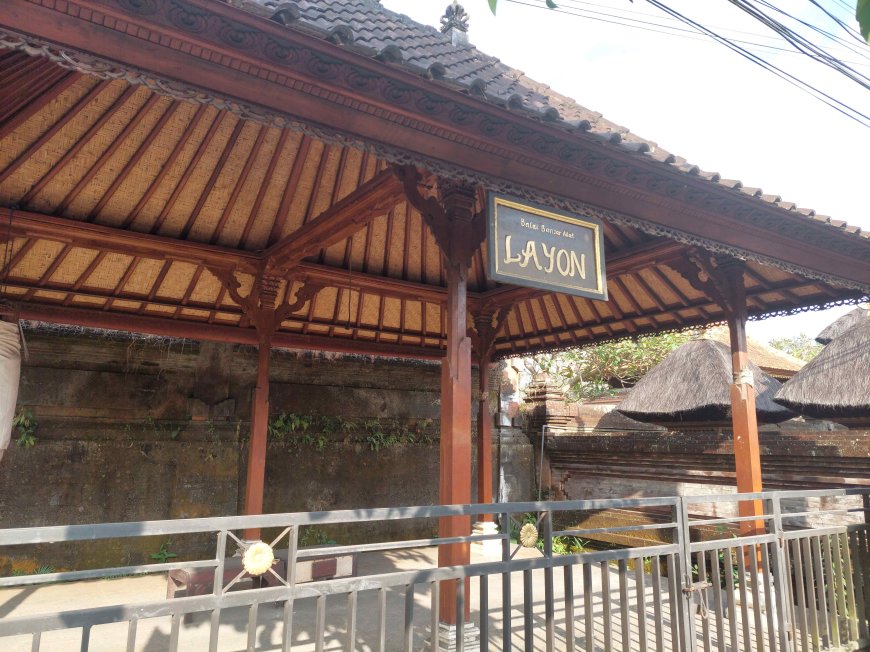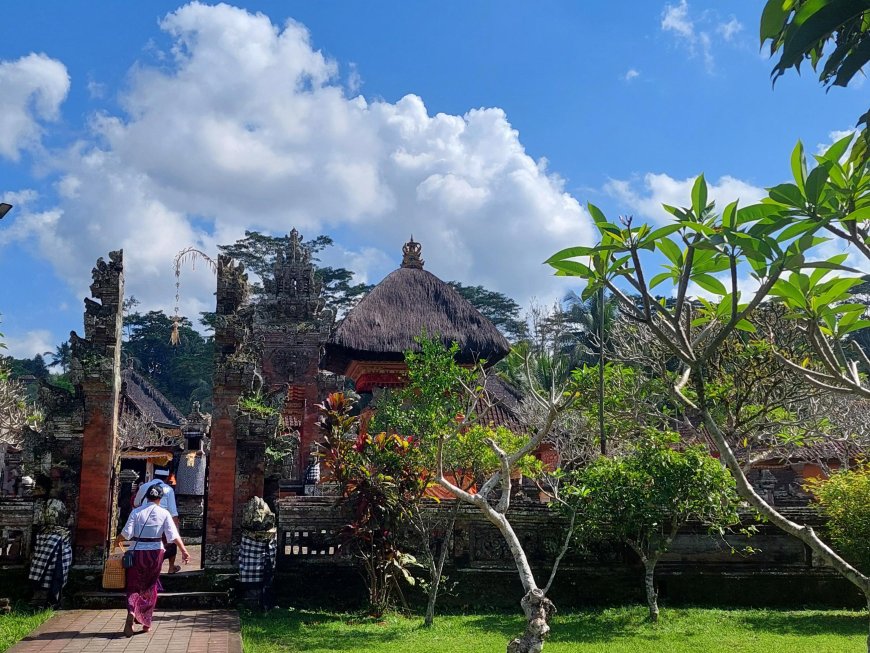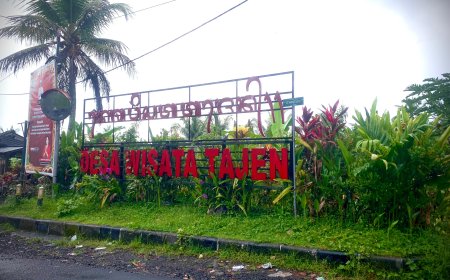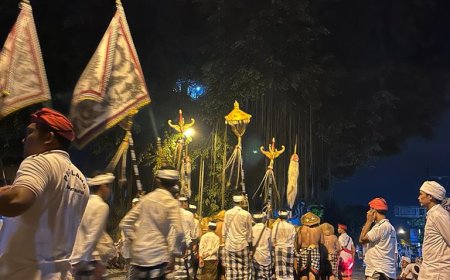Traditions and Uniqueness of the Pakraman Tamanbali Traditional Village
Pakraman Tamanbali Traditional Village is a traditional village that has traditions, local wisdom, history and sacred places that are still preserved. Anyone will be fascinated by the traditions and uniqueness of this one village.

The nickname Island of the Gods is very suitable for the island of Bali. This is reflected in the natural beauty that soothes the eyes, such as mountains, lakes, waterfalls, and others. On the other hand, Bali also offers unique culture, which is like a tourist magnet, from various arts, customs, to ceremonies. However, there is still cultural diversity that is rarely glimpsed by tourists, namely traditional villages. Traditional Villages are units of traditional law communities in Bali which have territories, traditions and positions that have been passed down from generation to generation. Every traditional village in Bali has its own unique characteristics, ranging from the environment, traditions, to the existing sacred places. One of the traditional villages that has exclusive uniqueness is the Pakraman Tamanbali Traditional Village.
The Pakraman Tamanbali Traditional Village is located in Tamanbali Village, Bangli District, Bangli Regency, Bali. Pakraman Tamanbali Traditional Village is one of the 5 traditional villages in Taman Bali village. The other traditional villages are Pakraman Guliang Kangin Traditional Village, Pakraman Jelekungkang Traditional Village, Pakraman Kuning Traditional Village, and Pakraman Umanyar Traditional Village. The location of the Pakraman Tamanbali Traditional Village is in the middle of Tamanbali Village. To the south, this traditional village borders the Pakraman Guliang Kangin Traditional Village. Meanwhile, the northern part is bordered by the Pakraman Siladan Traditional Village. To the east it borders the Pakraman Jelekungkang Traditional Village, and to the west it borders the Pakraman Umanyar Traditional Village.

Layon Traditional Banjar Hall (Photo Source: Editorial Collection)
Tamanbali Pakraman Traditional Village has the largest area and the largest population compared to other Pakraman traditional villages in Tamanbali Village. This is in line with the number of traditional banjars which include 9 traditional banjars, including Sema Traditional Banjar, Gaga Traditional Banjar, Layon Traditional Banjar, Teruna Traditional Banjar, Presanghyang Traditional Banjar, Pande Traditional Banjar, Dadia Traditional Banjar, and Puri Tamanbali Traditional Banjar.
Different from traditional villages in general, the Pakraman Tamanbali Traditional Village has a palemahan or neighborhood where traditional banjar people live which is not in one complex. This is motivated by the history of the dynasty in the past. For example, the Presanghyang Traditional Banjar consists of krama or residents whose dynasty belongs to the Pra Sanghyang. Likewise with other traditional banjars in the Tamanbali Pakraman Traditional Village.
The palemahan situation does risk causing divisions, but in the Pakraman Tamanbali Traditional Village it actually strengthens family ties between neighbors and creates a new culture, called Banjar Tempek. This banjar can be seen when a sad event occurs. For example, there is a resident who comes from the Presanghyang Traditional Banjar, but lives in palemahan where the residents are predominantly from the Teruna Traditional Banjar. When there is a sad event (death), the residents will join the Tempek Banjar, namely the Teruna Traditional Banjar.
Apart from the unique palemahan situation, the Pakraman Tamanbali Traditional Village is also classified as an Apanaga Traditional Village (a village that has received royal influence). This is marked by the presence of several artifacts, such as Pelinggih Lembu, Bale Mas, Puri, and folklore related to the Tamanbali Kingdom. Apart from artifacts, there are also historical remains in the form of a temple containing gardens and ponds, called Pura Taman Narmada Bali Raja.

Lembu Pelinggih Artifact (Photo Source: Editorial Collection)
Kahyangan Tiga Temple in a traditional village generally consists of Pura Desa, Pura Puseh, and Pura Dalem, each with 1 temple. However, unlike the Pakraman Tamanbali Traditional Village, there are two Dalem Temples, of which the Dadia parahyangan Traditional Village is at the Dalem Tengaling Temple, while the other 8 traditional villages are at the Dalem Gede Tamanbali Temple. Apart from the Kahyangan Tiga temple, there is also the Melanting temple which is supported by all traditional villages. Every religious ceremony or odalan in the temple environment of Pakraman Tamanbali Traditional Village is held by the penyanggra or ceremony organizer who takes turns every 6 months.
The eight traditional hamlets whose parahyangan at Dalem Gede Tamanbali Temple have a unique tradition called Mayah Ketekan. This tradition is carried out every Tilem Kapitu which is located at Dalem Gede Tamanbali Temple. The Mayah Ketekan tradition is similar to a population census, which aims to count the exact number of residents who are residents of the Tamanbali Pakraman Traditional Village, both those living in the village and outside the village. The calculation is carried out by means of which residents will give original pis bolong which represents one person's soul. However, these days it is done with one thousand rupiah, because it is difficult to find authentic pis bolong.

Dalem Gede Tamanbali Temple (Photo Source: Editorial Collection)
Not only the Mayah Ketekan tradition, there is also a tradition of dividing banjar members which is still maintained by the Presanghyang Traditional Banjar. This tradition takes the form of a policy that divides banjar members into two, namely the main members who represent each family member in their yard (pangarap) and other family members who are married (balaangkap). The main number of members remains 34 people while the balaangkap members can increase. Apart from that, balaangkap members cannot hold traditional ceremonies in their name, but must be held in the name of the main member. In this way, this tradition can indirectly maintain harmony between siblings in the home environment.
Apart from its traditions and palemahan, the Pakraman Tamanbali Traditional Village has very strict rules for Ngaben ceremonies, namely that the burial ceremony can be carried out by holy people and people who have died unnaturally. Meanwhile, other residents must be buried first and will later take part in the mass Ngaben carried out by each traditional banjar no later than once every 5 years. Looking at the exclusive uniqueness of the Pakraman Tamanbali Traditional Village, it can be used as a reflection and at the same time become a figure for other traditional villages to maintain their traditions and local wisdom. So that future generations can pass on the baton to protect and preserve it.






























































